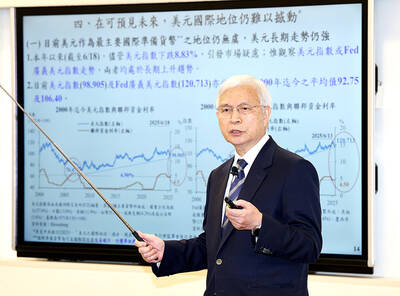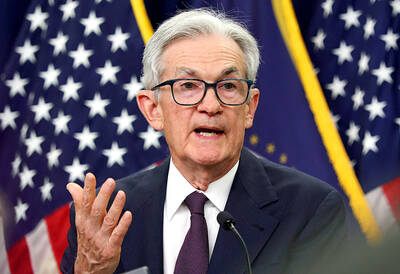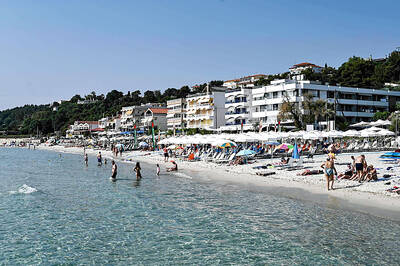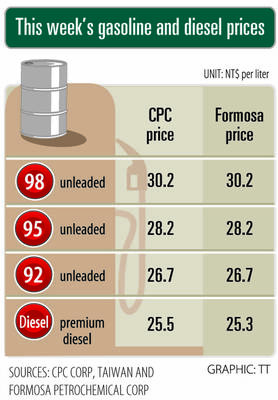The lights are off in the lobby of JVC Kenwood Corp’s headquarters in Yokohama, Japan, and there is no one to greet guests. It is what has become a typical weekday afternoon.
The pioneer of the VHS videotape and maker of Japan’s first television set is bracing for tough times. Earnings from car navigation devices — the hit product that emerged as JVC sales of camcorders and audiovisual systems slumped in the smartphone revolution — are under pressure. Some car owners have decided an iPhone can guide them just as well.
Companies like JVC, which were once at the heart of a consumer electronics export empire, are struggling to shape their own destiny. Their fall is pushing Japan’s entire electrical machinery industry, which regularly generated trade surpluses of ¥7 trillion (US$67 billion) until 2007, toward deficits that may emerge as soon as next year, UBS AG estimates.
“This is a critical problem for Japan because these companies have been a driving force in the economy,” said Tomoko Takase, a research manager at the Japan Electronics and Information Technology Industries Association (JEITA). “The hollowing out of the industry has been in the news, but the level of awareness doesn’t match the significance of the consequences.”
Domestic output from the electronics industry is projected to drop to ¥11.8 trillion this year, less than half its peak in 1997, the association said.
While a move in production overseas to cut costs has brought some of the change, the nation’s share of worldwide electronics output is also falling. Japanese factories at home and abroad together accounted for 18 percent of the global total last year, down from 25 percent in 2007, JEITA data show.
In a room beyond JVC’s empty lobby, the company’s chief of public and investor relations Isamu Endo explains that pushing out completely new products is too risky right now.
“We still need to stabilize our profits after making structural changes,” Endo said in an interview earlier this month. “We want to be building up a little cash.”
The company forecasts a profit for the 12 months through March after reporting losses in four of the six years since JVC and Kenwood merged and separated from Panasonic Corp.
It has cut its work force by 14 percent to just under 20,000 people since then. About 90 percent of production now takes place overseas, mostly in Indonesia and Malaysia, JVC said.
The company that stamped its logo on the jerseys of English soccer team Arsenal for almost two decades has a new strategy. Its focus is making products for other companies rather than promoting the consumer brand, Endo said.
JVC’s car electronics business, including audio and navigation systems, posted a loss last fiscal year. It was profitable in the three months through June, the company’s financial statements show.
Japan’s exports of audio and visual equipment, including televisions, digital cameras and music players, have plunged more than 60 percent to ¥649 billion since 2007, when Apple Inc launched the iPhone, according to the latest data from JEITA.
The year also marked the high point for Japan’s electrical machinery shipments abroad, which reached ¥16.9 trillion and were almost double the level of imports.
Sony Corp, one of Japan’s best known corporate brands, has posted five annual losses since the smartphone revolution. Its shares have dropped almost 70 percent since the middle of 2007.
JVC has slumped 64 percent since the merger with Kenwood and split from Panasonic.

NOT JUSTIFIED: The bank’s governor said there would only be a rate cut if inflation falls below 1.5% and economic conditions deteriorate, which have not been detected The central bank yesterday kept its key interest rates unchanged for a fifth consecutive quarter, aligning with market expectations, while slightly lowering its inflation outlook amid signs of cooling price pressures. The move came after the US Federal Reserve held rates steady overnight, despite pressure from US President Donald Trump to cut borrowing costs. Central bank board members unanimously voted to maintain the discount rate at 2 percent, the secured loan rate at 2.375 percent and the overnight lending rate at 4.25 percent. “We consider the policy decision appropriate, although it suggests tightening leaning after factoring in slackening inflation and stable GDP growth,”

DIVIDED VIEWS: Although the Fed agreed on holding rates steady, some officials see no rate cuts for this year, while 10 policymakers foresee two or more cuts There are a lot of unknowns about the outlook for the economy and interest rates, but US Federal Reserve Chair Jerome Powell signaled at least one thing seems certain: Higher prices are coming. Fed policymakers voted unanimously to hold interest rates steady at a range of 4.25 percent to 4.50 percent for a fourth straight meeting on Wednesday, as they await clarity on whether tariffs would leave a one-time or more lasting mark on inflation. Powell said it is still unclear how much of the bill would fall on the shoulders of consumers, but he expects to learn more about tariffs

Greek tourism student Katerina quit within a month of starting work at a five-star hotel in Halkidiki, one of the country’s top destinations, because she said conditions were so dire. Beyond the bad pay, the 22-year-old said that her working and living conditions were “miserable and unacceptable.” Millions holiday in Greece every year, but its vital tourism industry is finding it harder and harder to recruit Greeks to look after them. “I was asked to work in any department of the hotel where there was a need, from service to cleaning,” said Katerina, a tourism and marketing student, who would

i Gasoline and diesel prices at fuel stations are this week to rise NT$0.1 per liter, as tensions in the Middle East pushed crude oil prices higher last week, CPC Corp, Taiwan (台灣中油) and Formosa Petrochemical Corp (台塑石化) said yesterday. International crude oil prices last week rose for the third consecutive week due to an escalating conflict between Israel and Iran, as the market is concerned that the situation in the Middle East might affect crude oil supply, CPC and Formosa said in separate statements. Front-month Brent crude oil futures — the international oil benchmark — rose 3.75 percent to settle at US$77.01